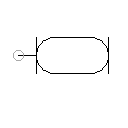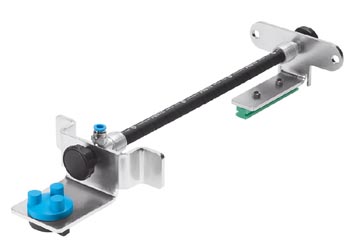Fluidic muscle


Fluidic muscle is a tensile actuator which mimics the natural movement of a muscle. It consists of contractible tubing and appropriate connectors.
The contractible tubing is formed by a pressure-tight length of rubber hose, sheathed in high-strength fibres. The fibres create a rhomboidal pattern with a three-dimensional grid structure.
The tubing stretches in circumferential direction when an internal pressure is applied, generating a tensile force and a contraction movement in the longitudinal direction of the muscle. The usable tensile force is at its maximum at the start of the contraction and then decreases to zero in a virtually linear manner as a function of the stroke.
The fluidic muscle can only apply tensile forces. The size of the stroke which can be achieved through contraction is about 25% of the total muscle length. External tensile forces permit maximum pretensioning of 5%.
For the fluidic muscle, not only the force, but the stroke directly depends on the current working pressure. Positioning in the stroke direction is very easy. Instead of a displacement encoder which has to be integrated parallel to the drive, a pressure sensor can be installed at a favourable position. By allocating pressure and stroke, almost any number of positions can be realised.
Adjustable parameters
| Designation | Range | Default value |
|---|---|---|
| Type | DMSP-10, DMSP-20, DMSP-40, MAS-10, MAS-20, MAS-40 | DMSP-10 |
| Length | 40 ... 9000 mm | 250 |
| Designation | Range | Default value |
|---|---|---|
| External force | -1000000 ... 1000000 N | 0 |
| Moving mass | 0 ... 10000 kg | 0 |
| Static friction coefficient | 0 ... 2 | 0 |
| Sliding friction coefficient | 0 ... 2 | 0 |
| Mounting angle | 0 ... 360 deg | 0 |